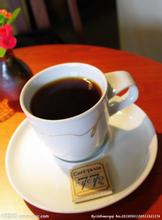Costa Rican coffee producing area with dense forest: an introduction to the characteristics of coffee flavor and taste manor
The Government of Costa Rica has 21 ministries, namely: Ministry of Foreign Affairs and worship, Ministry of the President, Ministry of Internal Affairs, Police and Public Security; Ministry of Finance, Ministry of Foreign Trade, Ministry of economy, Industry and Commerce; Ministry of Planning and Economic Policy; Ministry of Health; Ministry of Science and Technology; Ministry of decentralization and Local Development; Ministry of Social Welfare and Family; Ministry of Public works and Transport; Ministry of Public Education; Ministry of Housing and settlement; Ministry of Environment and Energy Ministry of Labour and Social Security; Ministry of Culture and Youth; Ministry of Agriculture and Animal Husbandry; Ministry of Justice and Peace; Ministry of Sports; Ministry of Tourism. [6]
Cabinet
President: head of state or government, elected by direct election by the whole people, for a term of four years, not re-elected, but re-elected at alternate terms. Luis Guillermo Solis (Luis Guillermo Solis), a member of the Civic Action Party, was sworn in as the 16th President of the second Republic until May 2018 after winning the second round of the general election with 77.8% of the vote on 6 April 2014. [6]
Cabinet: 2 vice presidents and 21 ministers. The vice president is elected together in the presidential election, and the ministers are appointed by the president. When the president is absent, the first and second vice presidents and the speaker take over at one time. In the Solis cabinet, first Vice President and Minister of Finance Elio, second Vice President Anna Elena Chakon, Minister of Foreign Trade Alexander, Minister of economy, Industry and Commerce will Moramos, Minister of Planning and Economic Policy Olga Marta Sanchez, Minister of Public works and Transportation Ross Signini, Governor of the Central Bank Oliver, President of the State Power Telecommunications Corporation Carlos Manuel. [6]
The current government was established in May 2010. The main cabinet members are:
First Vice President Alfio Piwa Mason (Alfio Piva me é n)
Second Vice President Louis Lieberman Luis Liberman Gingsburg
Minister of the Presidential Office and Minister of Tourism Carlos Ricardo Benavides (Carlos Ricardo Benavides)
Minister for Foreign and religious Affairs Enrique Castillo Barrantes (Enrique Castillo Barrantes)
Finance Minister Edgar Ayares (Edgar Ayales)
Minister of Foreign Trade Annabel Gonzalez Campadar (female, Anabel Gonz á lez Campabadal)
Minister of economy, Industry and Trade May Andean Guerrero (female, Mayi Antill ó n Guerrero)
Roberto Gallardo Nunez, Minister of Planning (Roberto Gallardo N ú ñ ez)
Minister of Health Daisy Corrales Diaz (female, Daisy Corrales D í az)
Minister of Science and Technology Alejandro Cruz Molina (Alejandro Cruz Molina)
Minister of decentralization and Local Administration Juan Marin Quiroz (Juan Mar í n Quir ó s)
Minister of Social Welfare Fernando Marin Rojas (Fernando Mar í n Rojas)
Minister of Home Affairs, Police and Public Security Mario Zamora Cordero (Mario Zamora Cordero)
Pedro Castro Fern á ndez, Minister of Public works and Transport
Minister of Education Leonardo Garnier Rimoro (Leonardo Garnier R í molo)
Housing Minister Guido Alberto Munch (Guido Alberto Monge)
Ren é Castro Salazar, Minister of the Environment, Energy and Telecommunications
Minister of Labour and Social Security Olman Segura (Olman Segura)
Minister of Culture Manuel Obregon Lopez (Manuel Obreg ó n L ó pez)
Minister of Agriculture and Animal Husbandry Gloria Abraham Peralta (female, Gloria Abraham Peralta)
Attorney General Fernando Ferraro Castro (Fernando Ferraro Castro)
Sports Secretary William Corrales (William Corrales). There are many excellent producing areas in Costa Rica, and the high-quality producing areas of Costa Rica have a common understanding of quality, that is, it requires the use of mature coffee fruits to ensure the production of high-quality coffee.
Generally speaking, a large amount of water is used in the post-processing of the picked coffee fruit, but the advanced production equipment in Costa Rica saves the use of water resources to the greatest extent, and a circulating filter is used to treat the waste water from washing coffee beans. let the waste water be purified into clean water to prevent pollution of the local soil environment.
After peeling, the peel and pulp of the coffee fruit are recovered as feed for livestock, or converted into organic fertilizer, as well as coffee bean dryer fuel. It can be said that in every process of coffee production, Costa Rica complies with the requirements of maintaining the natural environment.
Among the many excellent producing areas in Costa Rica, there is a famous producing area that stands out-Tarazu (Tarrazu), also known as Tarasu. Tarazhu is very famous in the world of boutique coffee and is one of the major coffee producing areas in the world. In the 2014 COE competition, of the 23 beans on the list, 17 came from Tarasu. Tarasu is located in the fertile volcanic region of Central America, which has a humid climate and fertile volcanic soil, abundant rainfall throughout the year, high altitude, and dense forest natural shade, providing a unique growth environment for coffee growth. Pesticides or artificial fertilizers are not used in the planting process. Nearly 95% of the coffee beans produced in Tarazhu Alpine are very hard beans (SHB), which generally grow above 1500 meters above sea level.
At present, the Tarazhu Cooperative has 26 member estates. Among them, Raminita Manor, which is one of the most famous coffee farms in Tarazu. La Minita produces about 1 million pounds of coffee beans a year, and after the entire estate produces coffee beans that are carefully selected to remove defects, only 15 per cent of the coffee beans can bear the mark of the Laminita estate, while the rest enter the coffee market. But the prices of these coffees entering the market are still higher than those of other beans produced in Central America. Raminita's strict management of all aspects of coffee production has established a world-class reputation and can be called a world-famous coffee farm.

Important Notice :
前街咖啡 FrontStreet Coffee has moved to new addredd:
FrontStreet Coffee Address: 315,Donghua East Road,GuangZhou
Tel:020 38364473
- Prev

The sweet taste of coffee beans in Bali, Indonesia, the characteristics of the manor producing area introduce Indonesian boutique coffee
This digestion process, so that coffee beans have an unparalleled magical change, the flavor tends to be unique, the taste is particularly mellow, rich and round sweet taste is also unmatched by other coffee beans. This is because the civets' digestive system destroys the protein in the coffee beans, making the coffee produced by the protein much less bitter, but increasing the roundness of the coffee beans.
- Next

Full degree of Mexican Coffee Manor Flavor and Taste characteristics introduction of Mexican boutique coffee beans
The selection of Mexican coffee is generally carried out manually. The main basis for selection is according to the fullness of coffee particles, whether it is uniform, and then grade it. Generally speaking, coffee with full and uniform grains is easier to preserve. Only the fullest and most evenly grained coffee beans can be roasted to represent the best and best coffee in the country. After the workers have picked the coffee beans, they put the coffee
Related
- Detailed explanation of Jadeite planting Land in Panamanian Jadeite Manor introduction to the grading system of Jadeite competitive bidding, Red bid, Green bid and Rose Summer
- Story of Coffee planting in Brenka region of Costa Rica Stonehenge Manor anaerobic heavy honey treatment of flavor mouth
- What's on the barrel of Blue Mountain Coffee beans?
- Can American coffee also pull flowers? How to use hot American style to pull out a good-looking pattern?
- Can you make a cold extract with coffee beans? What is the right proportion for cold-extracted coffee formula?
- Indonesian PWN Gold Mandrine Coffee Origin Features Flavor How to Chong? Mandolin coffee is American.
- A brief introduction to the flavor characteristics of Brazilian yellow bourbon coffee beans
- What is the effect of different water quality on the flavor of cold-extracted coffee? What kind of water is best for brewing coffee?
- Why do you think of Rose Summer whenever you mention Panamanian coffee?
- Introduction to the characteristics of authentic blue mountain coffee bean producing areas? What is the CIB Coffee Authority in Jamaica?

